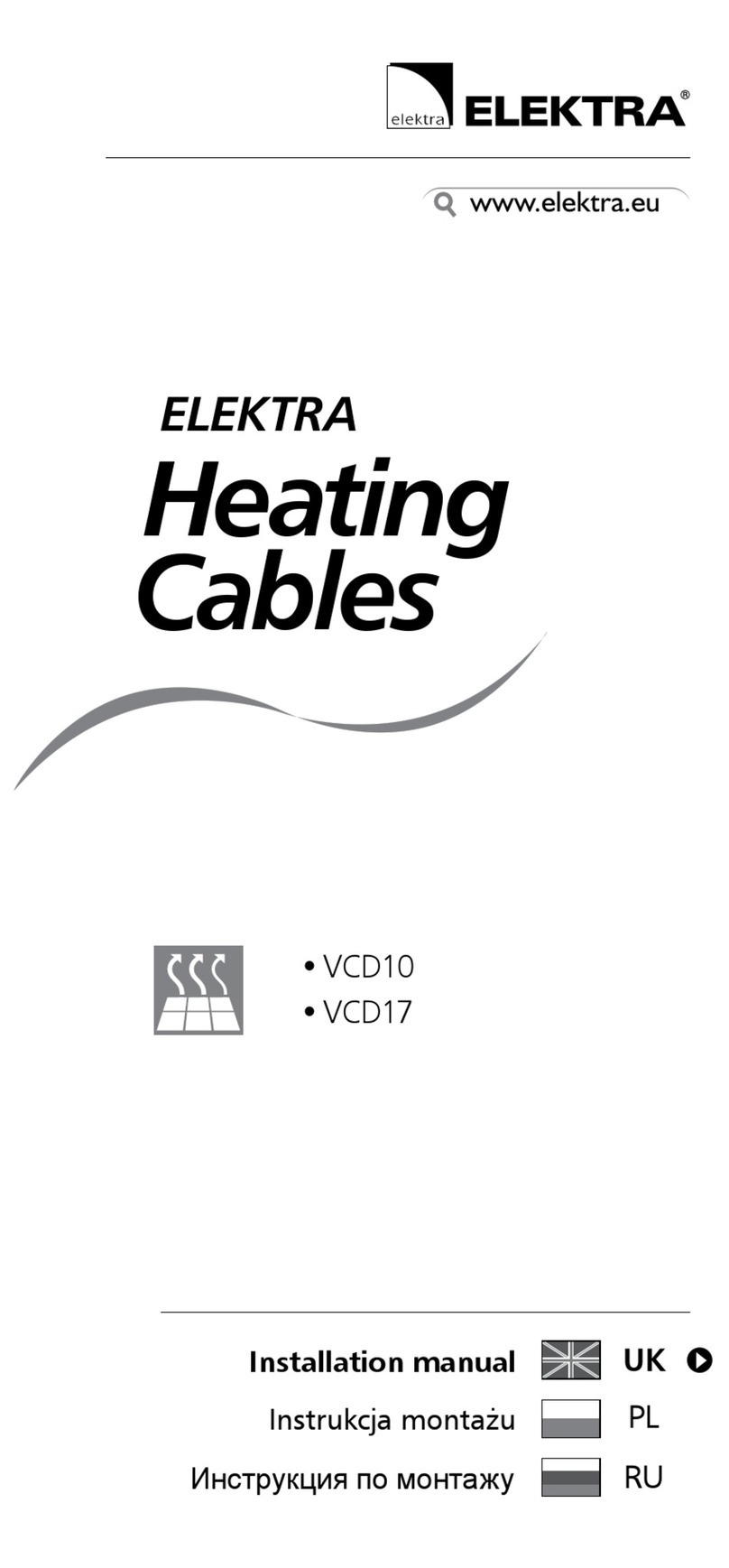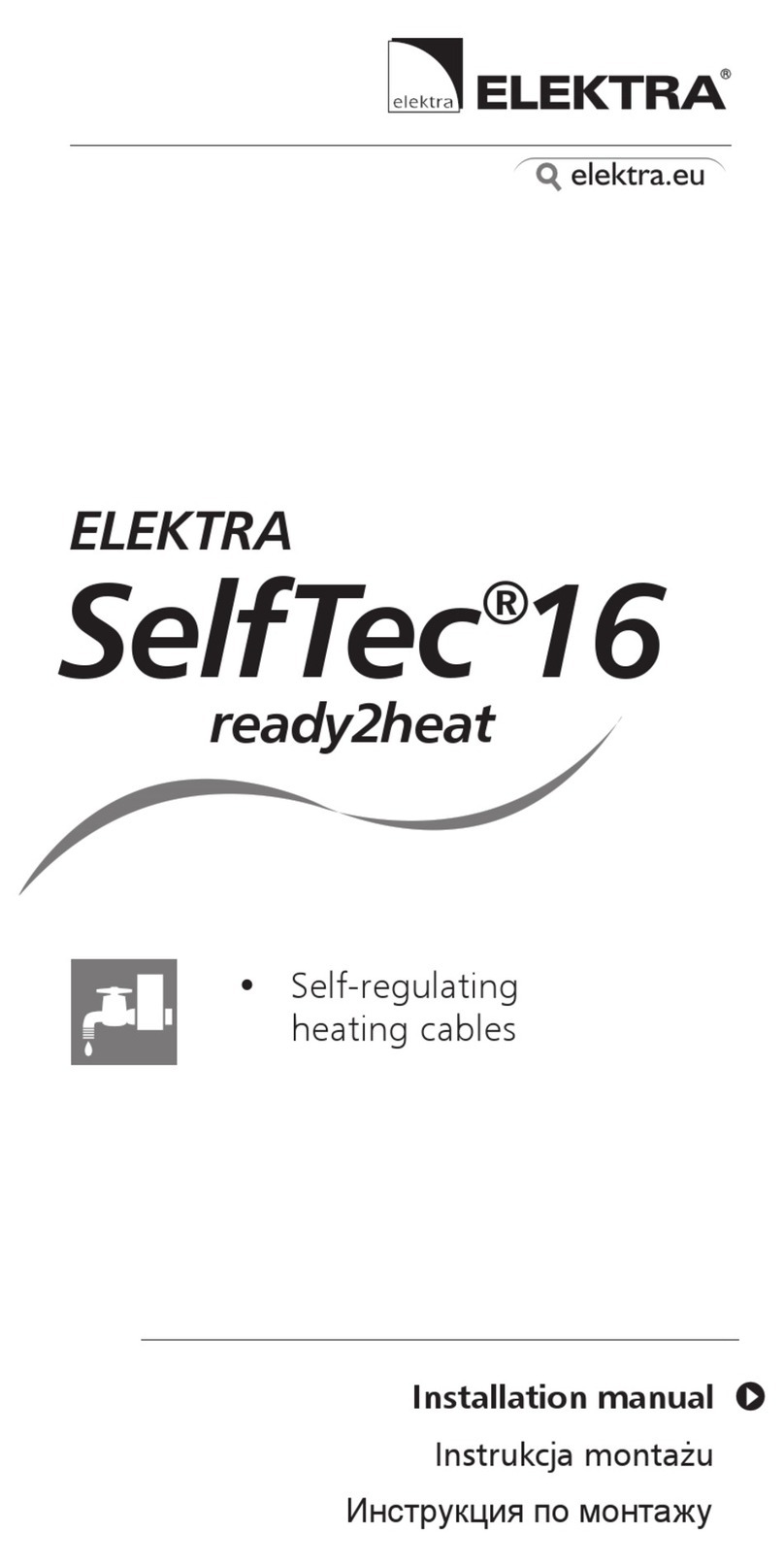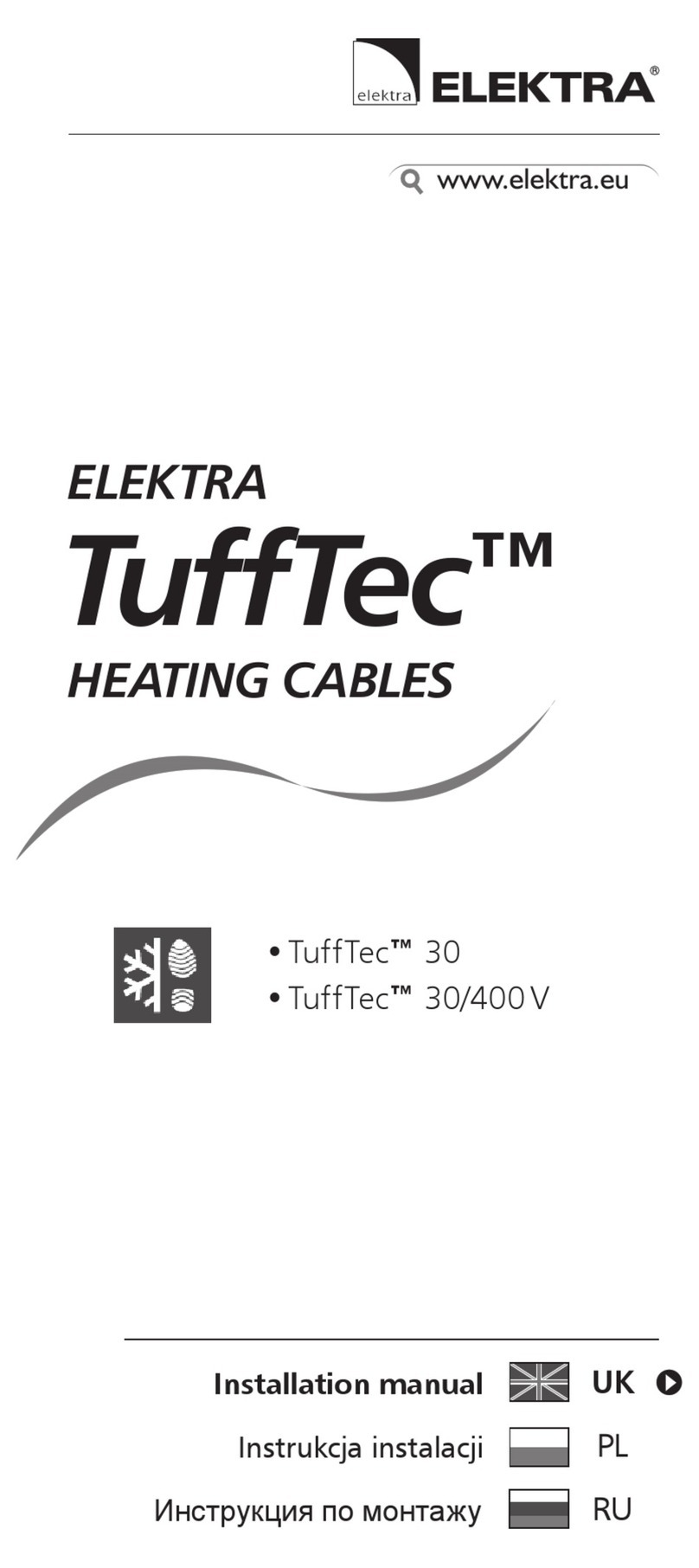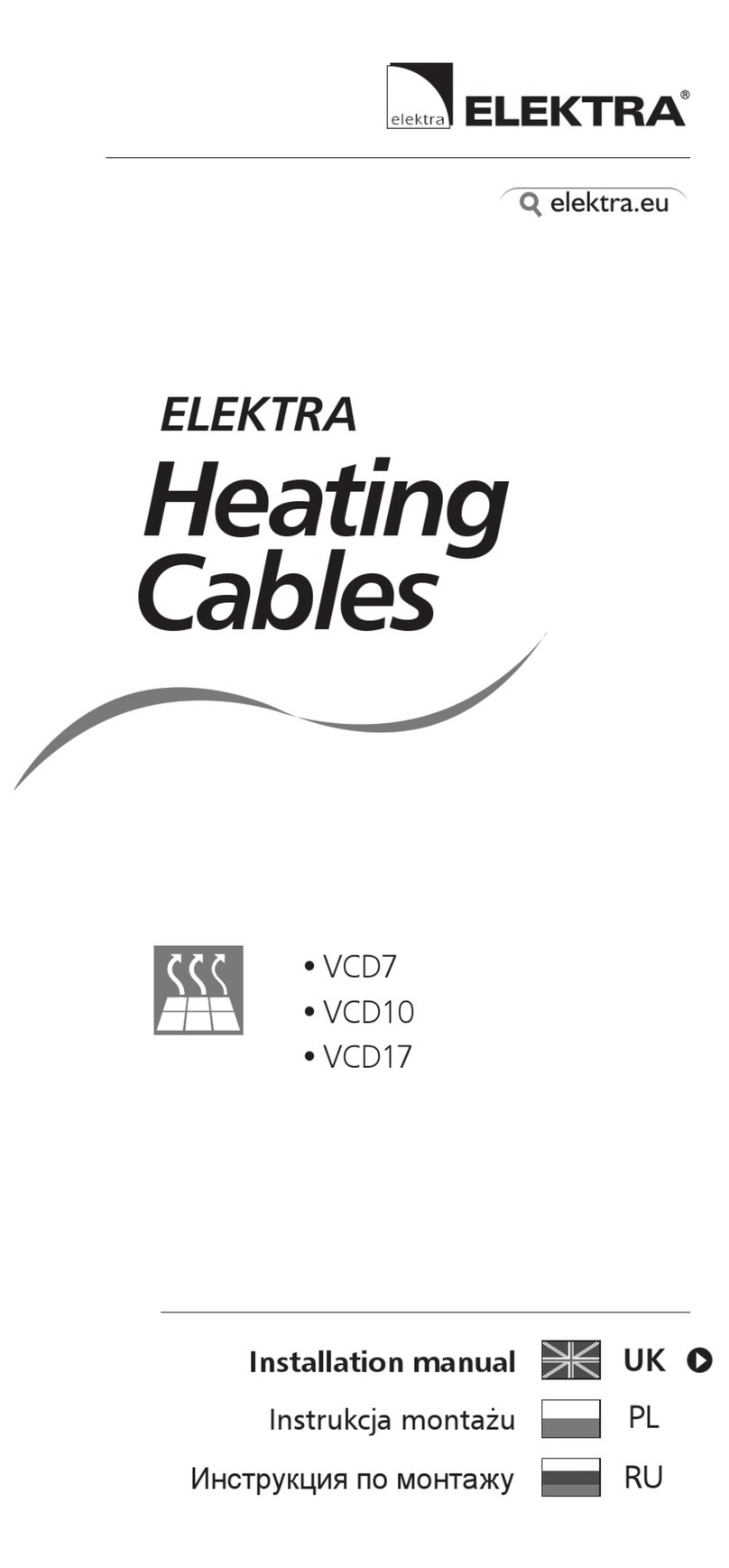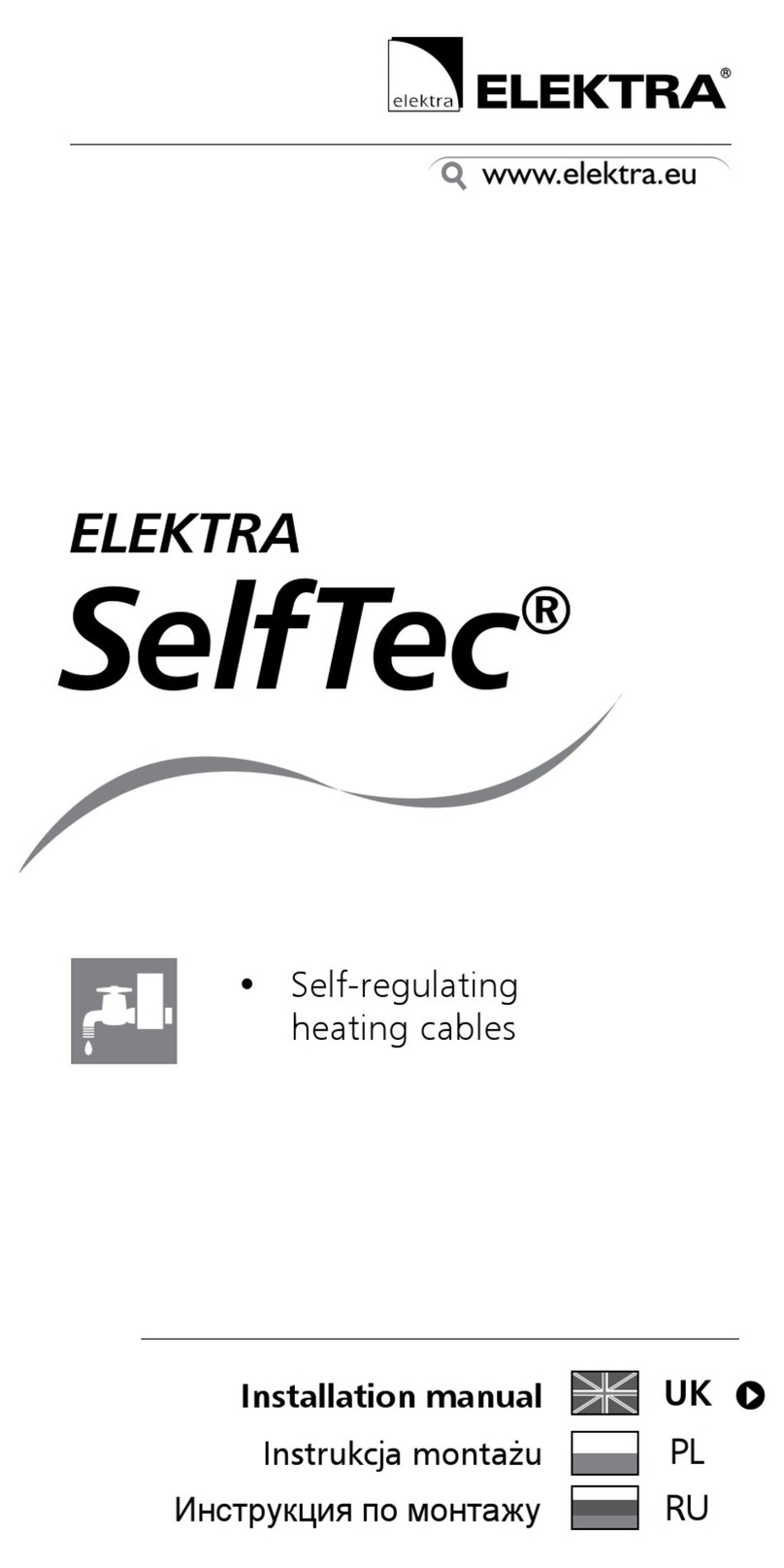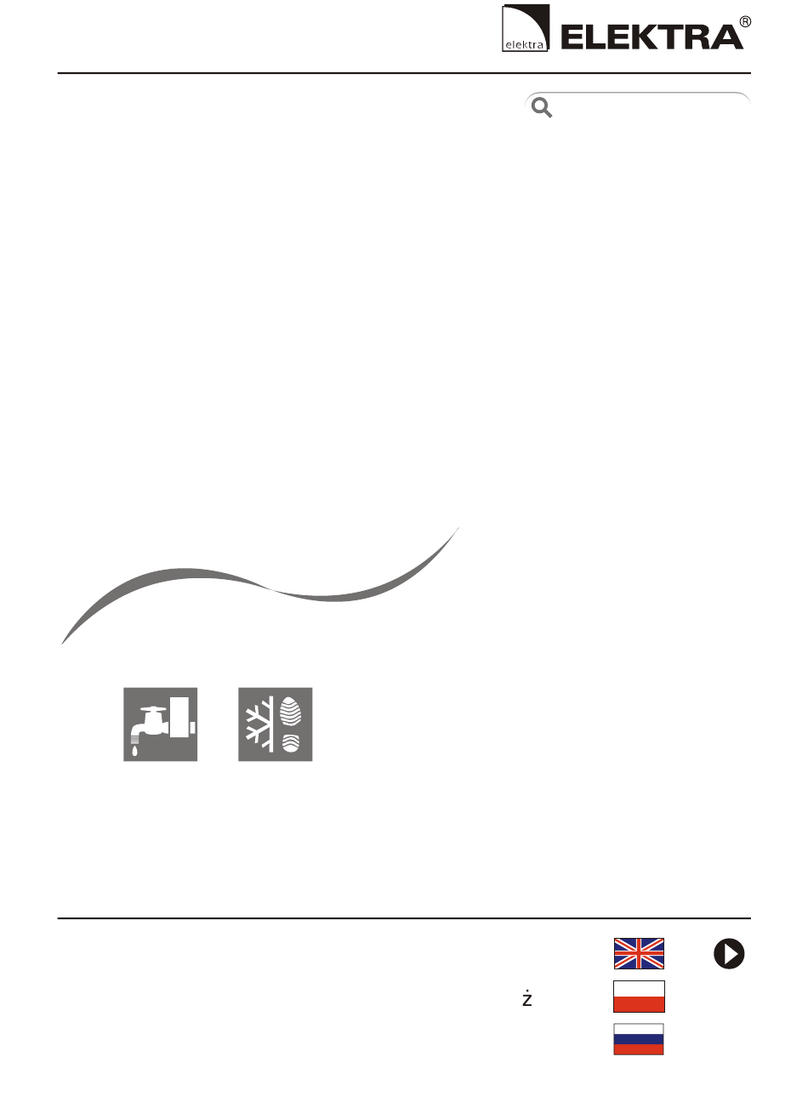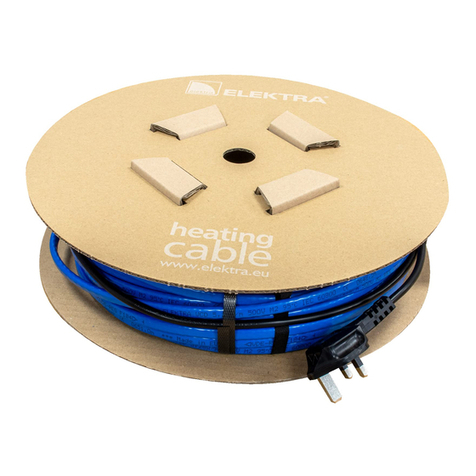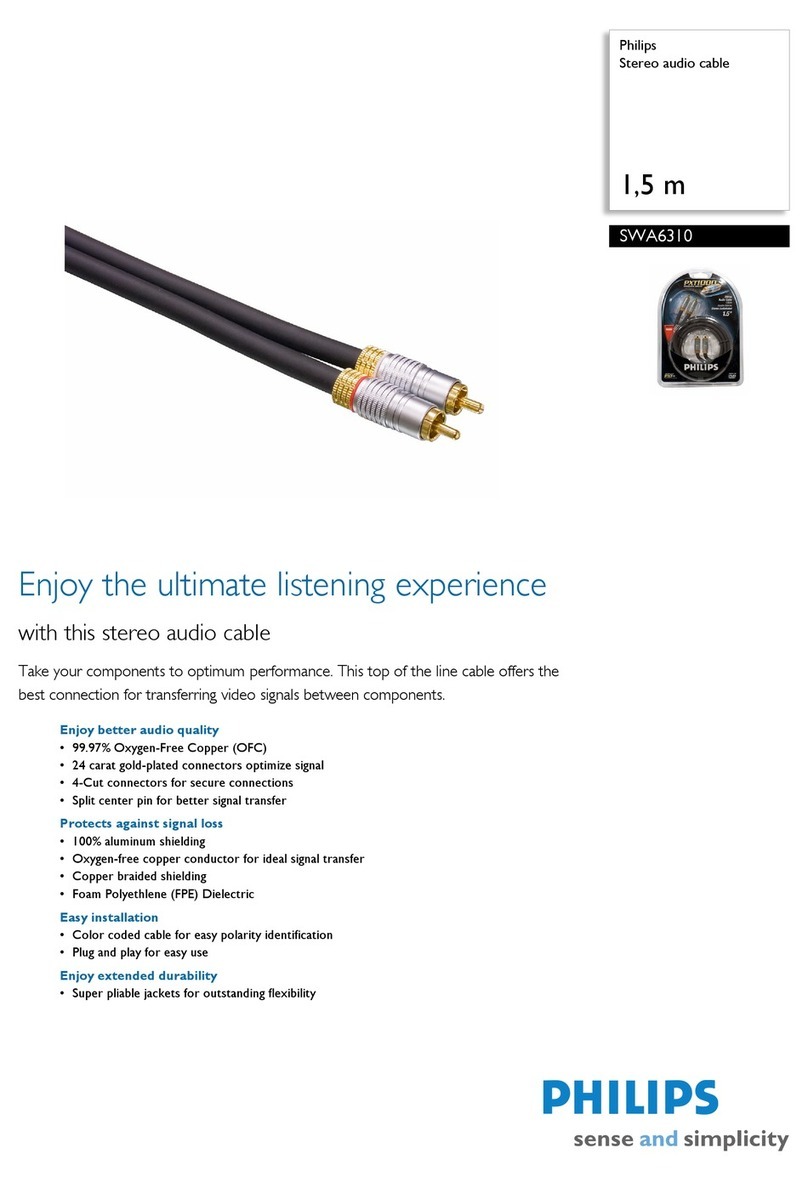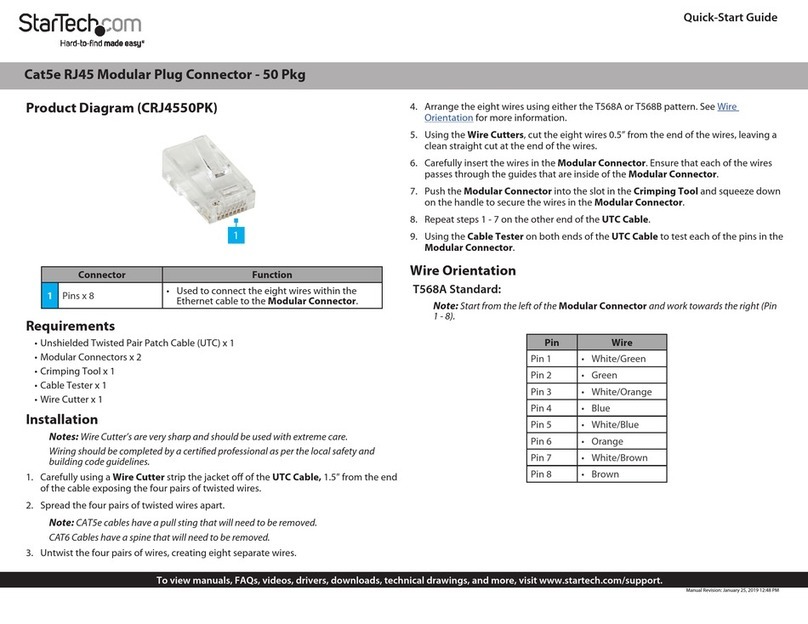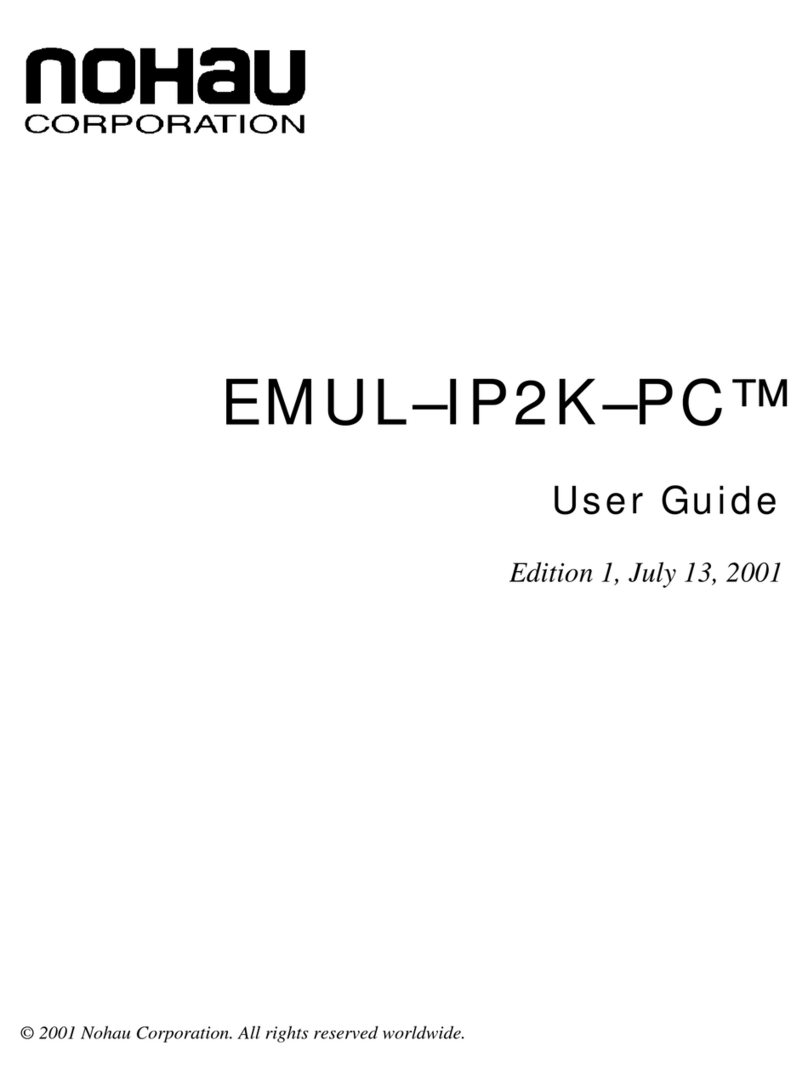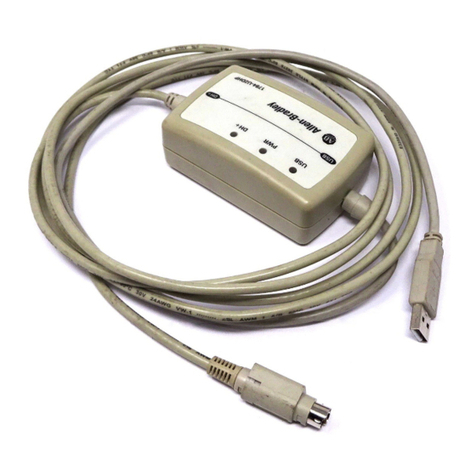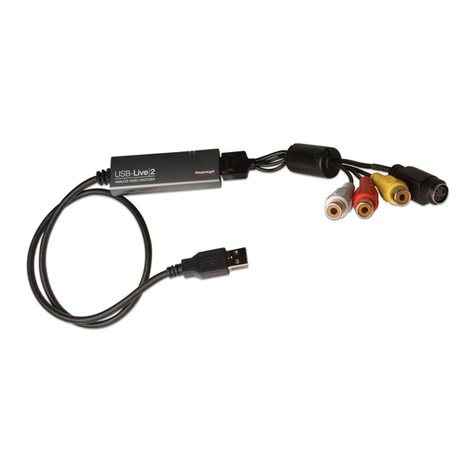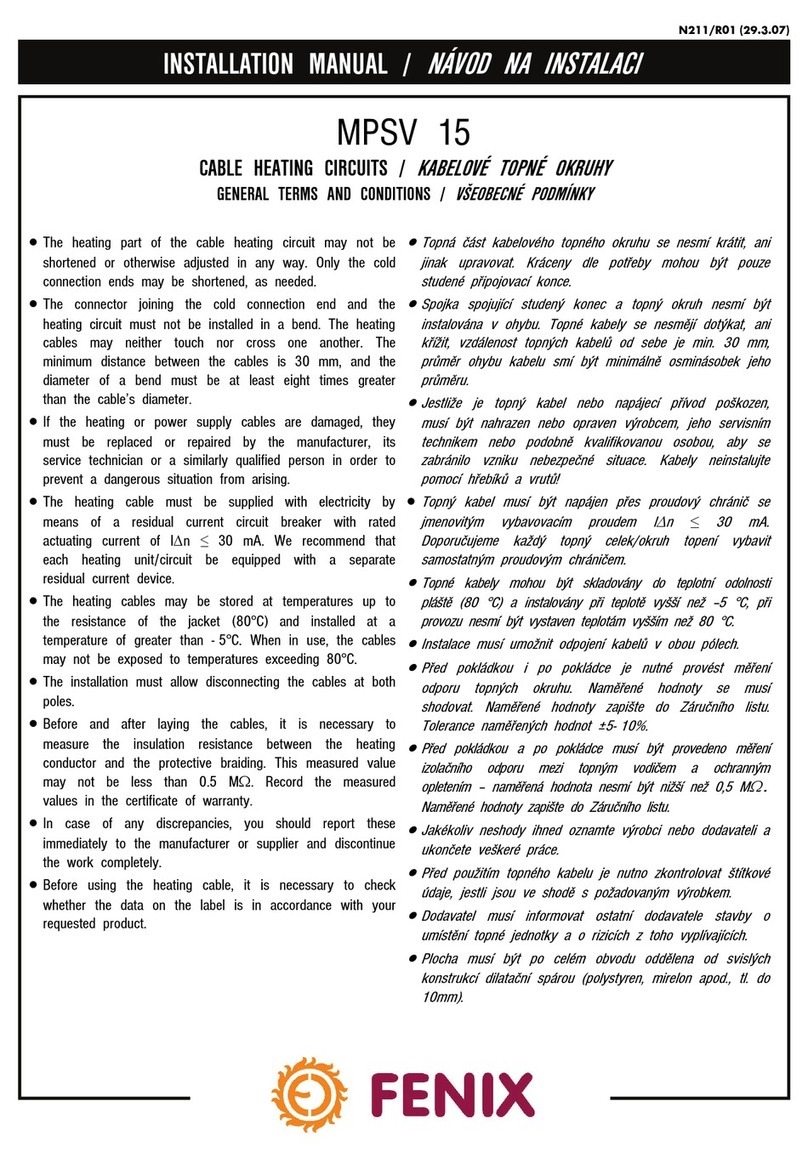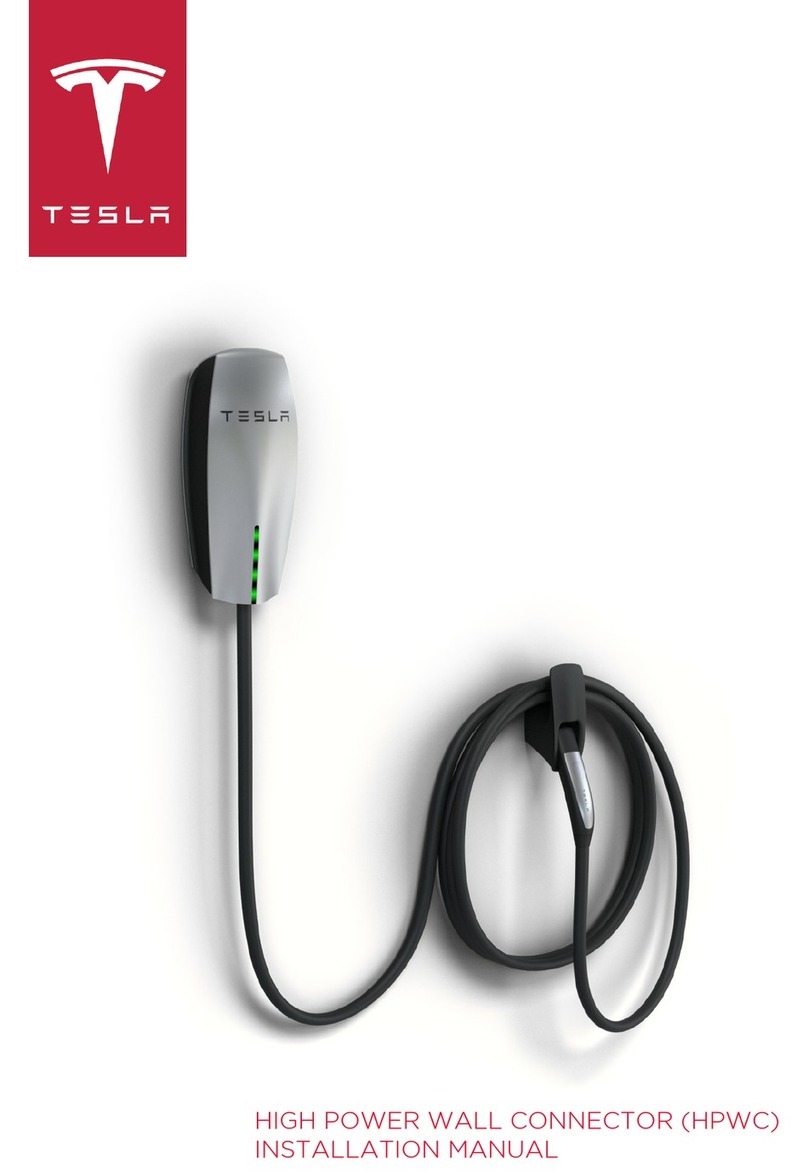General information
Surface protection against snow
and ice deposition
When protecting external areas from snow and ice
deposition, it is required to assess the required heat
output value per m2of the surface. Recommended
heat output depends on the regional climate condi-
tions, i.e. minimum ambient temperature, snowfall
intensity and wind strength.
Higher output is required if the heated area is:
•exposed to wind from below:
- bridges, stairs, loading ramps, overpasses
•located in a regions of intense snowfall
Ambient
temperature
Heat output
[W/ m2]
> -5°C
-5°C ÷ -20°C
-20°C ÷ -30°C
< -30°C
200
300
400
500
Note:
Never lead the end joint and the connecting
joint between the heating cable and the power
supply conductor out of the surface. Both joints
must be placed – depending on the type of sur-
face – within the layer of sand, dry concrete or
directly in concrete.
Never bend the joint and end seal.
Heating cables must be installed according to
the Instructions.
Mains connection of the heating cables should
be performed by an authorized electrician.
Power supply conductors (”cold tails”) in asphalt
should be positioned in the protective metal
installation conduit. Alternatively, power sup-
ply conductors can be led out of the area where
asphalt will be poured out.
!
7
